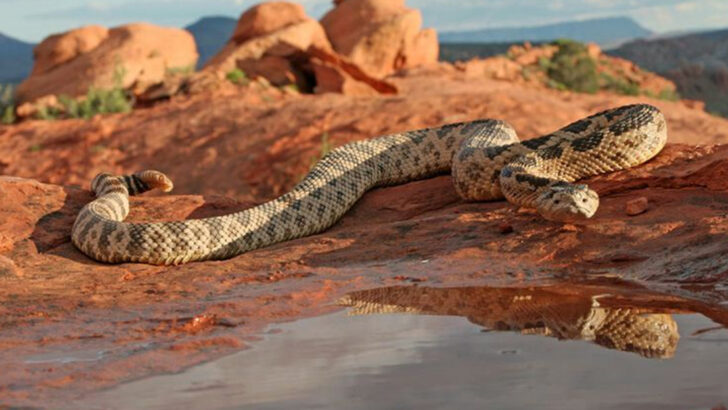Think you know how snakes eat? Think again.
These cold-blooded creatures have a whole other level of weird when it comes to their feeding habits. From the bizarre to the downright shocking, some snakes don’t just swallow prey—they get creative.
Imagine a snake that specializes in eating eggs, or one that devours other snakes like a pro. Or even stranger: a snake that hunts with a taste for the unexpected, taking down creatures most would never believe are on the menu.
These 15 snakes are about to blow your mind with their bizarre eating rituals. Get ready for a wild ride into the strange and twisted world of serpent feeding habits!
Egg-Eating Snake
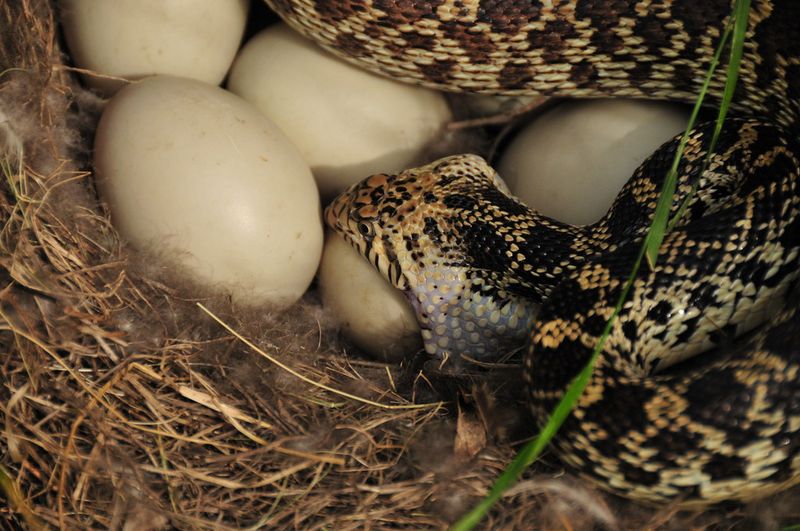
The egg-eating snake is known for its unique diet. Unlike other snakes, it specifically targets bird eggs. With a specialized vertebrae structure, it crushes the eggs internally before regurgitating the shells. Often found in Africa, these snakes provide an essential role in controlling bird populations.
Their feeding mechanism involves an effortless glide up trees to reach nests. Remarkably, they don’t possess teeth to manage their delicate meals. These snakes offer an intriguing glimpse into nature’s adaptability, showcasing evolution’s role in creating specialized feeders.
King Cobra
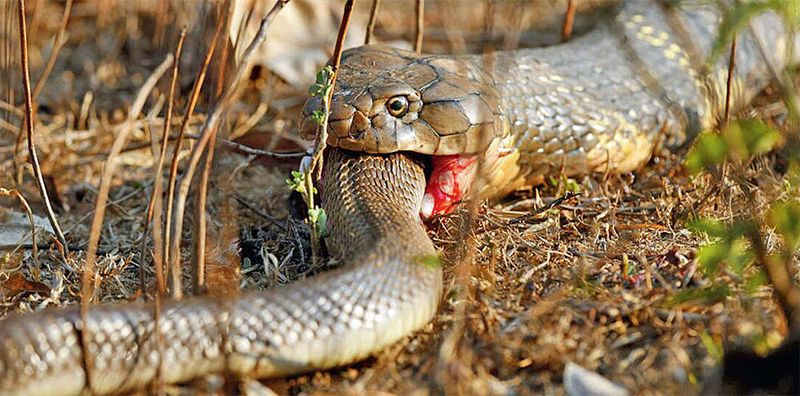
King Cobras are infamous for their cannibalistic tendencies, often dining on other snakes. This regal reptile, the longest venomous snake, uses its potent venom to subdue its prey before swallowing it whole.
Living primarily in forests across Southeast Asia, they are expert hunters. Their diet not only includes small mammals but also their serpentine cousins. This predatory preference highlights their dominance in the ecosystem, maintaining balance by controlling snake populations.
King Cobras are truly nature’s apex predators, with an insatiable appetite for other snakes.
African Rock Python
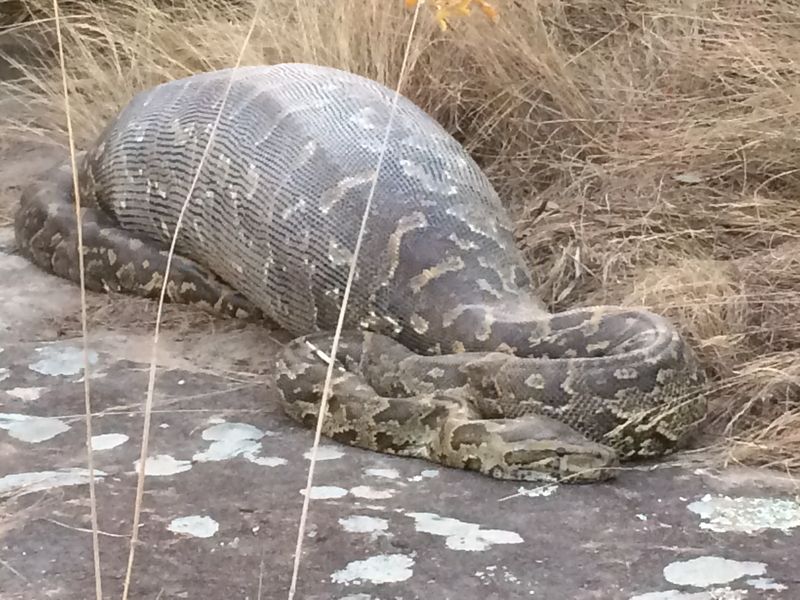
The African Rock Python displays astonishing eating habits. It targets large mammals, including antelopes and crocodiles. This giant snake employs sheer strength, constricting its prey until suffocation ensues before ingestion.
Primarily located in sub-Saharan Africa, these pythons are unyielding predators. Their powerful jaws stretch remarkably to accommodate hefty meals. Such feeding habits exemplify their adaptability and strength, allowing them to tackle formidable prey.
With their robust hunting skills, African Rock Pythons play a crucial role in their habitats.
Tentacled Snake
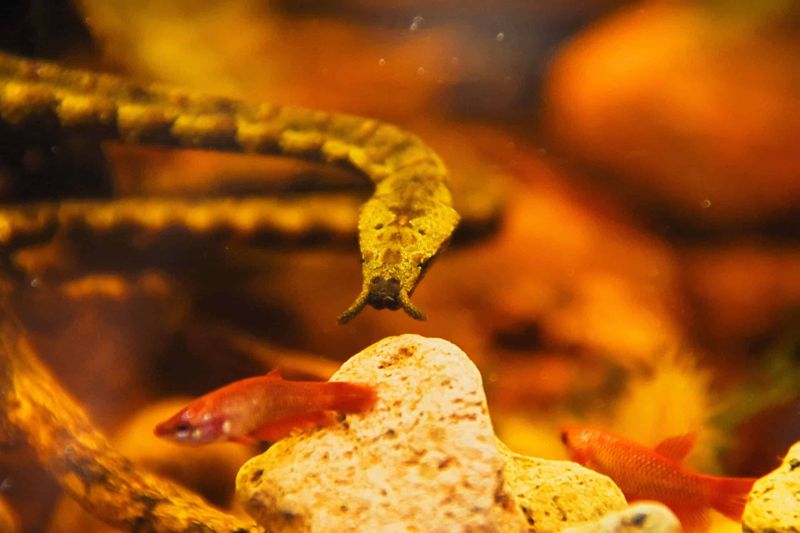
The tentacled snake exhibits a unique predatory strategy. Found in Southeast Asian waters, this snake uses its head’s tentacle-like projections to lure unsuspecting fish.
Submerged and motionless, it waits patiently. When a fish approaches, the snake swiftly strikes, thanks to its lightning-fast reflexes. These tentacles mimic aquatic plants, deceiving prey with uncanny precision. Such specialized adaptations enhance its predatory success.
Incorporating both stealth and trickery, the tentacled snake embodies nature’s ingenuity in hunting.
Brahminy Blind Snake
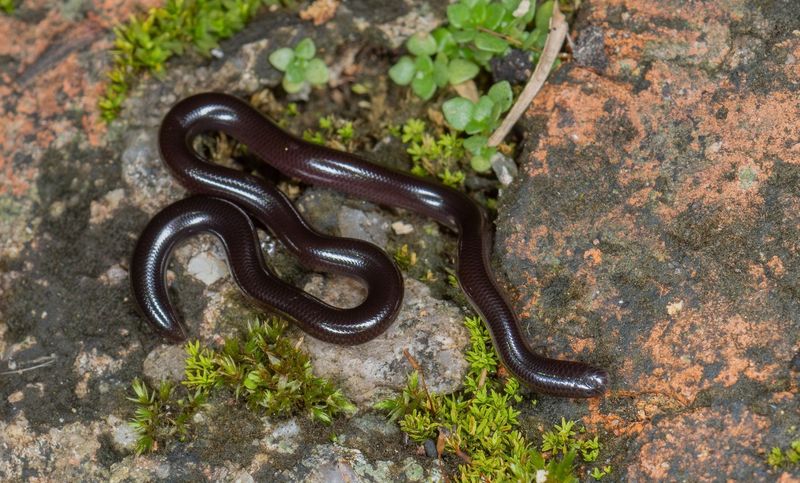
Brahminy Blind Snakes, though minuscule, exhibit peculiar feeding habits. They primarily consume termites and ants, playing a vital role in controlling these insect populations.
These snakes, often mistaken for worms, thrive in tropical and subtropical regions. Their diminutive size allows them to navigate tight spaces, infiltrating termite mounds with ease.
Their diet aids in maintaining ecological balance, showcasing the interconnectedness of ecosystems. Despite their small stature, Brahminy Blind Snakes have a significant impact on their environment.
Gaboon Viper
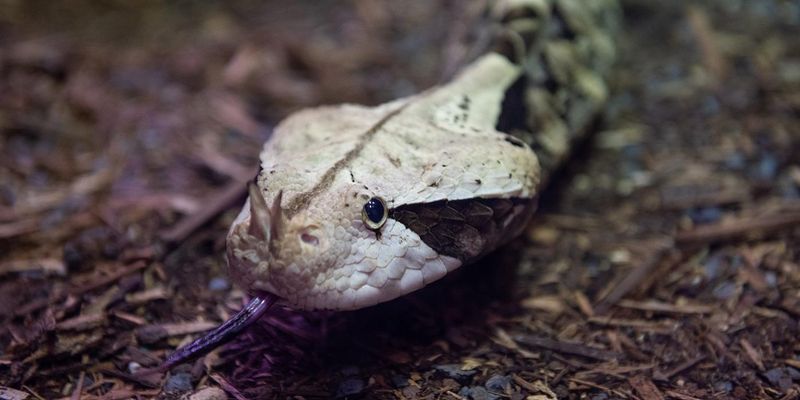
The Gaboon Viper’s eating habits are as striking as its appearance. With the longest fangs of any snake, it delivers a potent venom to immobilize prey swiftly.
Primarily found in African rainforests, it preys on rodents, birds, and occasionally other snakes. Its remarkable camouflage aids in ambush hunting, allowing it to blend seamlessly with its surroundings.
This viper’s feeding method underscores its efficiency as a predator, relying on both stealth and raw power.
Eastern Indigo Snake
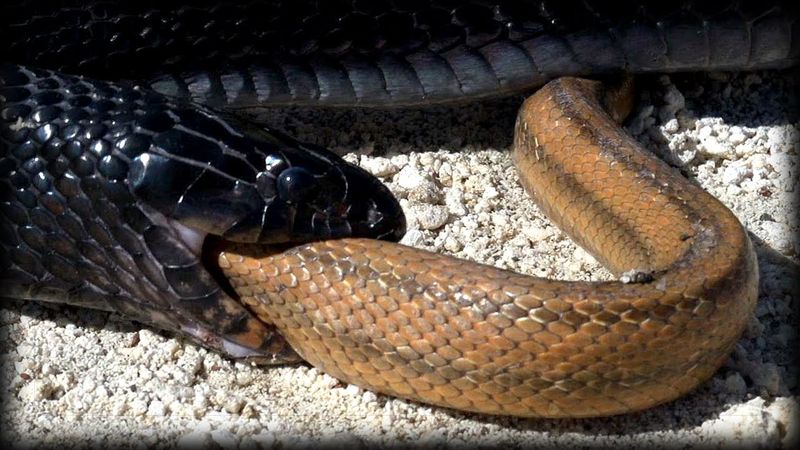
The Eastern Indigo Snake boasts a diverse diet, often consuming other snakes. This non-venomous species is known for its impressive size and vibrant coloration.
Inhabiting southeastern U.S., it preys on amphibians, mammals, and its serpentine kin. Its diet reflects its opportunistic nature, showcasing adaptability in varied environments.
Through its feeding habits, the Eastern Indigo Snake controls snake populations, contributing to ecological balance.
Anaconda
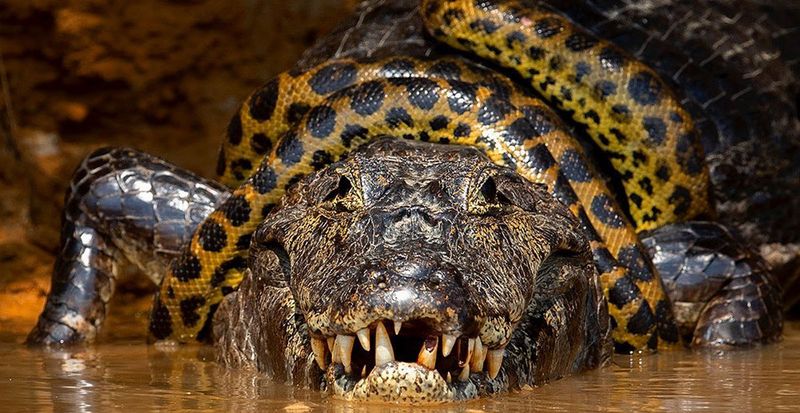
The Anaconda’s feeding habits are awe-inspiring. Located in South America, it targets large prey such as capybaras and caimans. This massive snake utilizes powerful constriction to subdue its prey.
Anacondas are excellent swimmers, often hunting in water. Their massive size enables them to engulf sizable animals, showcasing nature’s capacity for creating formidable predators.
These feeding strategies highlight the Anaconda’s dominance in its aquatic habitat, where sheer size and strength prevail.
Mangrove Snake
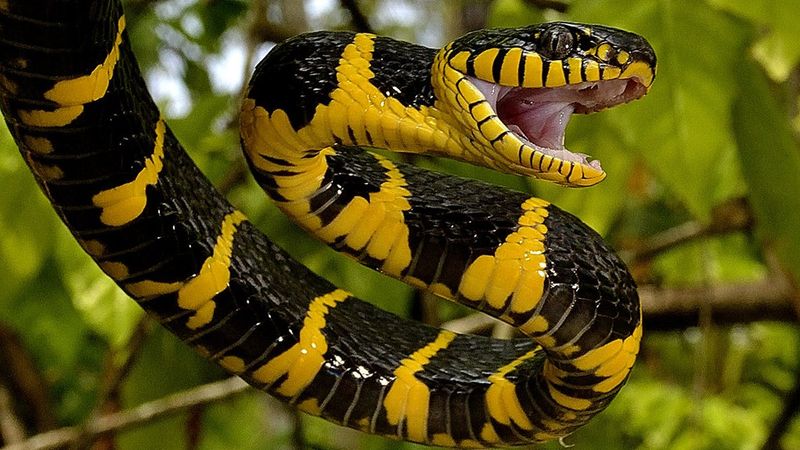
Mangrove Snakes, found in Southeast Asia, exhibit unique feeding habits. They predominantly hunt fish and amphibians, utilizing their semi-aquatic lifestyle.
With elongated bodies and mildly venomous bites, they swiftly capture slippery prey. Their black and yellow bands offer excellent camouflage in mangrove forests.
This snake’s diet underscores its adaptation to a niche habitat, where agility and stealth play crucial roles.
Hognose Snake
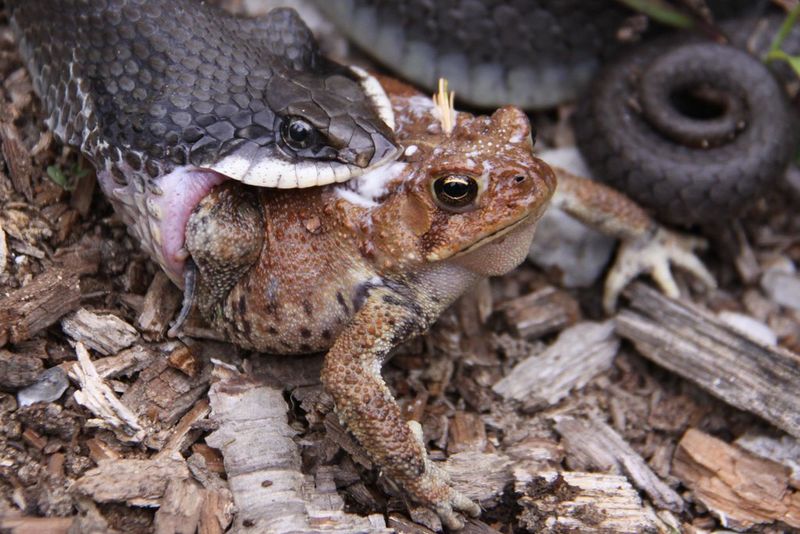
The Hognose Snake’s feeding habits are as distinctive as its upturned snout. It primarily preys on toads, using its specialized rear fangs to neutralize their toxins.
Found throughout North America, it often feigns death when threatened, showcasing a dramatic display of survival tactics. Its diet highlights its role in controlling amphibian populations.
With unique feeding and defense techniques, the Hognose Snake exemplifies adaptability and cunning in the wild.
Emerald Tree Boa
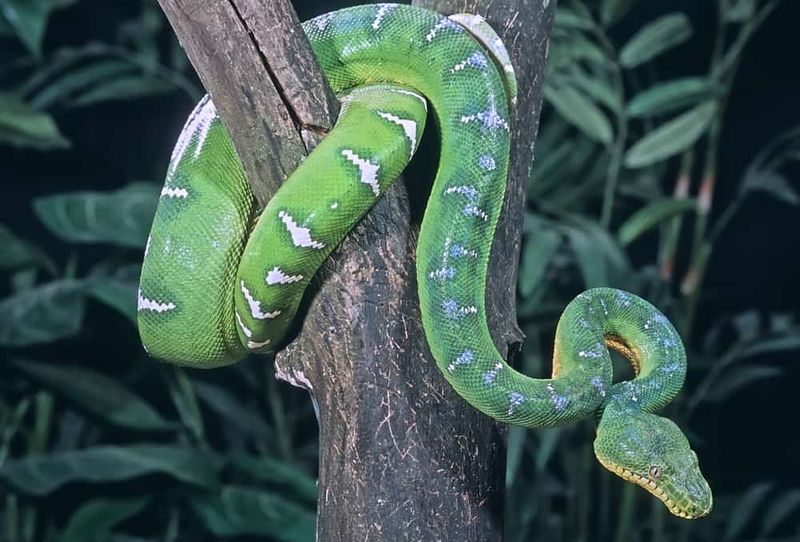
The Emerald Tree Boa captivates with its striking appearance and arboreal lifestyle. It preys primarily on birds and small mammals, relying on its vibrant green coloration for camouflage.
Inhabiting the Amazon, it uses its muscular coils to secure prey, striking with precision from tree branches. Its diet reflects its adaptability to life in the canopy.
This snake’s vivid presence and specialized hunting techniques highlight the diversity of rainforest ecosystems.
Rattlesnake
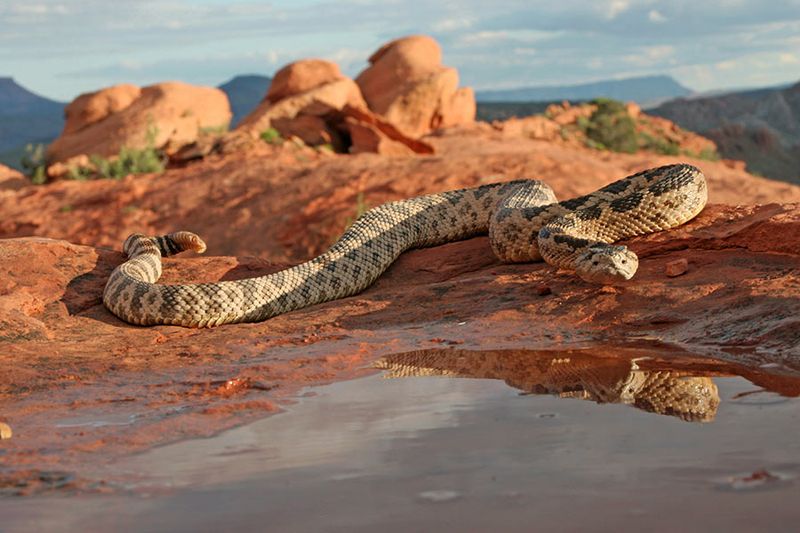
Rattlesnakes are renowned for their distinctive tail rattle and venomous bite. Their diet mainly includes small mammals and birds.
Adapted to arid environments, they rely on ambush tactics, using their camouflage to blend into desert landscapes. Their heat-sensing pits allow precise targeting of prey.
These feeding habits underscore their role as efficient desert predators, balancing local ecosystems.
Corn Snake
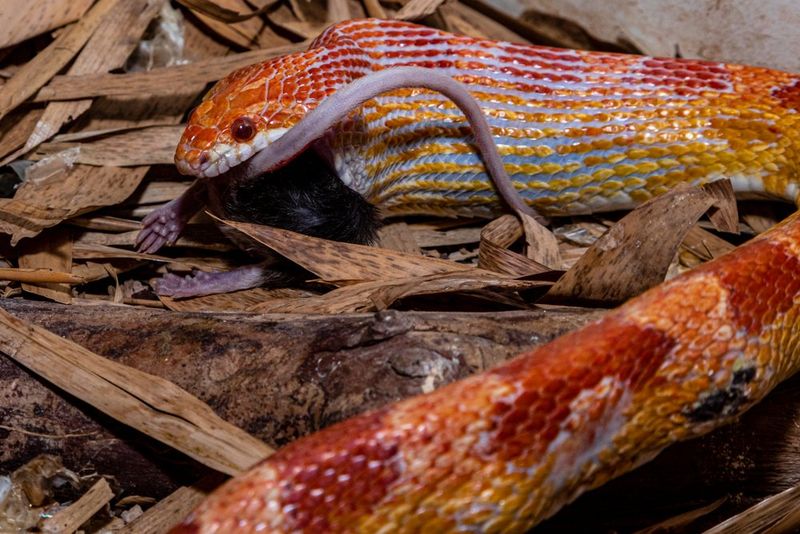
Corn Snakes, with their vibrant patterns, are adept hunters of rodents and birds. Native to North America, they thrive in agricultural areas, controlling pest populations.
Their non-venomous nature and docile demeanor make them popular pets. In the wild, they exhibit patient hunting strategies, using stealth to approach prey.
Through their feeding habits, Corn Snakes play a crucial role in managing rodent populations, benefiting both ecosystems and agriculture.
Coral Snake

Coral Snakes are known for their vibrant bands and potent venom. They primarily prey on other reptiles, including lizards and small snakes.
Found across the Americas, their bright colors serve as a warning to potential predators. Their diet underscores their position as specialized hunters within their habitats.
Coral Snakes’ feeding habits exemplify nature’s use of color and toxicity as survival strategies.
European Eel Snake
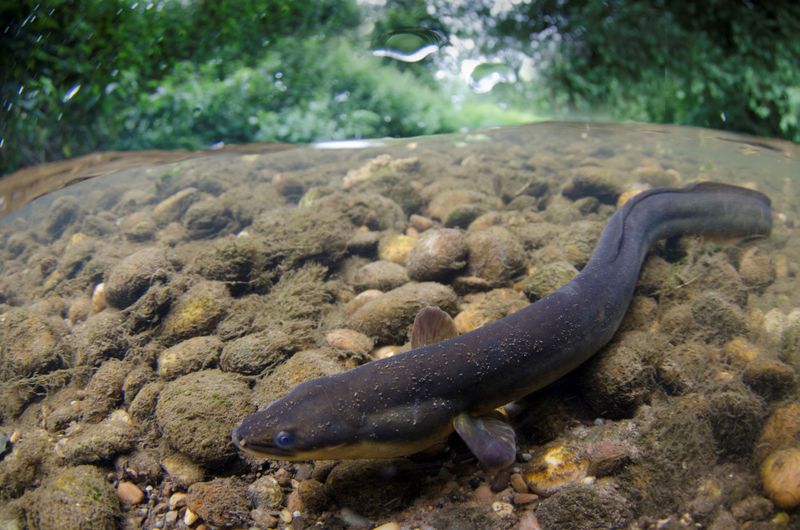
The European Eel Snake is a nocturnal marvel that glides through moonlit marshes in search of its favorite delicacy – eels. With a slender, elongated body akin to its prey, this snake can mimic the movements of eels to perfection.
In an extraordinary twist, it often wraps around its prey, suffocating the eel with a grip as gentle as the current of a quiet stream. This snake’s ability to blend seamlessly into its watery environment makes it an elusive hunter.
Did you know? The European Eel Snake’s unique diet allows it to thrive in regions where other snakes might struggle to find food.

